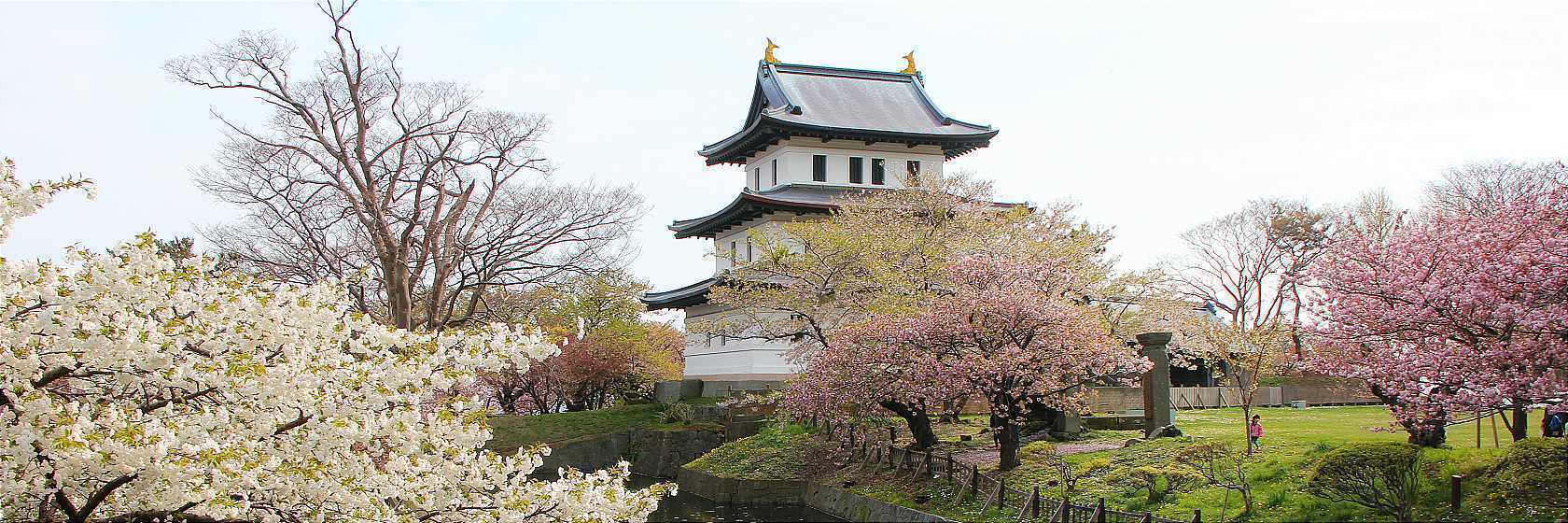Matsumae (松前) is a former castle town just west of Cape Shirakami, the southernmost point of Hokkaido. Only 20 kilometers across the Tsugaru Strait from Aomori, Matsumae was the northern limit of Japan during the Edo Period and the sole feudal fief on the otherwise wild, untamed frontier of Hokkaido. The prosperous town attracted merchants engaged in the shipping trade, and was protected by a garrison at Matsumae Castle, the only Japanese style castle to have been built on Hokkaido.
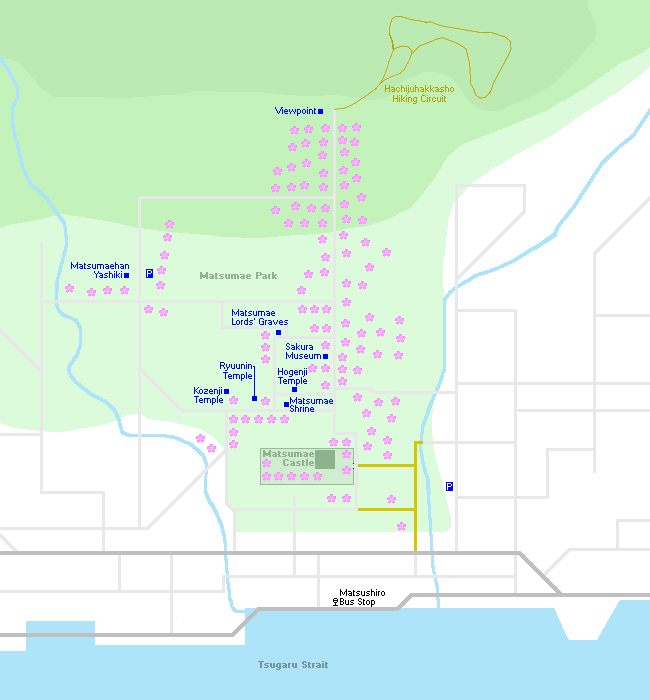
Built on a hillside vantage point, Matsumae Castle (also known as Fukushima Castle) cemented a foothold on Hokkaido from where to tap the island's abundant natural resources. Toward the end of the Edo Period, the castle was outfitted with cannon to counter the threat of foreign ships. As with many Japanese castles, Matsumae Castle's original keep was destroyed several times over the centuries. The current three story high structure is a modern concrete reconstruction from the early 1960s which houses a local history museum displaying a selection of artifacts of the local Matsumae clan, including some items related to the Ainu.
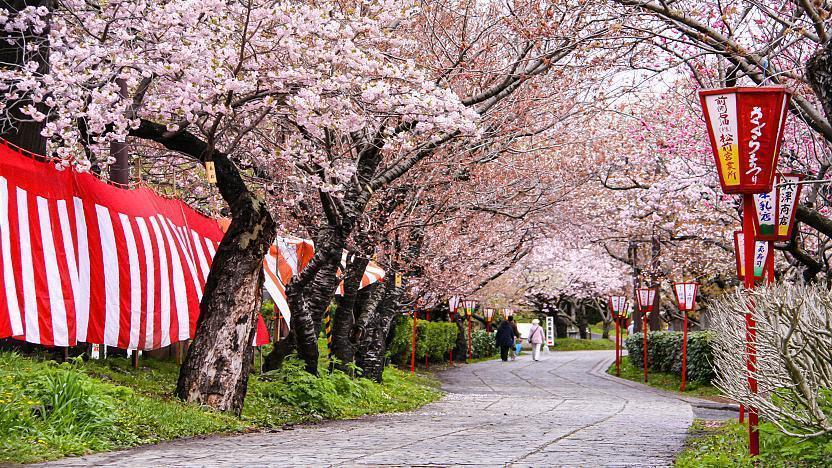
The former castle grounds north of the keep have been turned into the sprawling Matsumae Park, in which rows upon rows of cherry trees are planted. Over ten thousand cherry trees representing more than 250 different varieties can be seen around the grounds, and have earned the park the distinction of being ranked among the top 100 cherry blossom spots in Japan. In addition, the park has a small Sakura Museum just north of the castle keep with information about the development of the blossoms, and photos and preserved specimens of the types of cherry trees that you can see around the grounds.
Due to the large variety of cherry trees, Matsumae has an uncharacteristically long blooming season that lasts from late April to late May. A sakura festival is held during much of that period with food stands, festival stalls and the occasional live event held on the grounds. The castle keep is also illuminated in the evenings until about 21:00 between April and November.

Matsumae's temple district lies adjacent to the castle grounds, just northwest of the keep. The district is filled with a variety of temples of various Buddhist sects. Many of the temples predate the construction of Matsumae Castle, and as such comprise some of the oldest and most culturally valuable structures in Hokkaido. Other notable sights in the temple district include the graveyard of the local Matsumae lords and the 200 year old Kechimyaku Sakura (bloodline cherry) from which many of the park's cherry trees have descended.
Along the western edge of Matsumae Park is the Matsumaehan Yashiki, a small historical theme park that recreates Matsumae Town of the Edo Period with 14 buildings including merchant houses, a magistrates office, a shipping agent and a guard station. Some of the buildings can be entered and display life sized mannequins in period garb. Visitors can also rent period costume to wear while exploring the town.
Finally, the north end of Matsumae Park ends at the foot of Mount Shogun at a clearing in the cherry trees. The spot has a viewpoint from where you can look out over Matsumae's cherry groves to the Tsugaru Strait. The area is the entrance to the Hachijuhakkasho Hiking Circuit, a network of easy hiking trails on the side of Mount Shogun. A 20 minute long trail leads through groves of mountain cherry trees to a hut about half way up the mountain with various Buddhist statues and monuments erected along the path.

A few other interesting attractions can be found in nearby Fukushima Town, located on the eastern side of Cape Shirakami from Matsumae. The town is notable as the northern end of the 54 kilometer long Seikan Tunnel, the longest and deepest undersea rail tunnel in the world, which connects Hokkaido with Aomori Prefecture on Honshu.
Outside of the winter months, visitors to Fukushima can visit the Seikan Tunnel Museum, which is housed in a building designed like a section of the undersea tunnel. The museum exhibits information and photographs about the project and displays equipment used during the tunnel's construction.
Just a few hundred meters down the road from the tunnel museum stands the Yokozuna Museum, which is dedicated to two local former sumo wrestlers, Chiyonoyama and Chiyonofuji. Chiyonoyama was a powerful wrestler in postwar Japan, who quickly rose up to the highest rank of yokozuna. His protege, Chiyonofuji, was one of the lightest yokozuna in modern times, yet also one of the most powerful and successful.
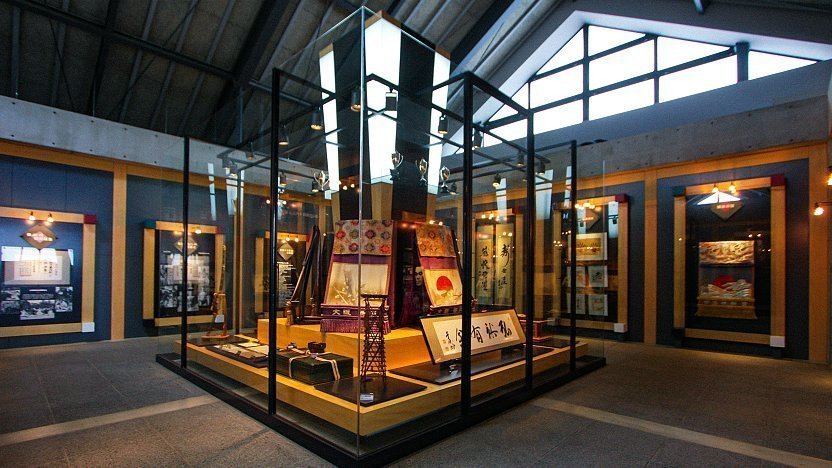
Getting there and around
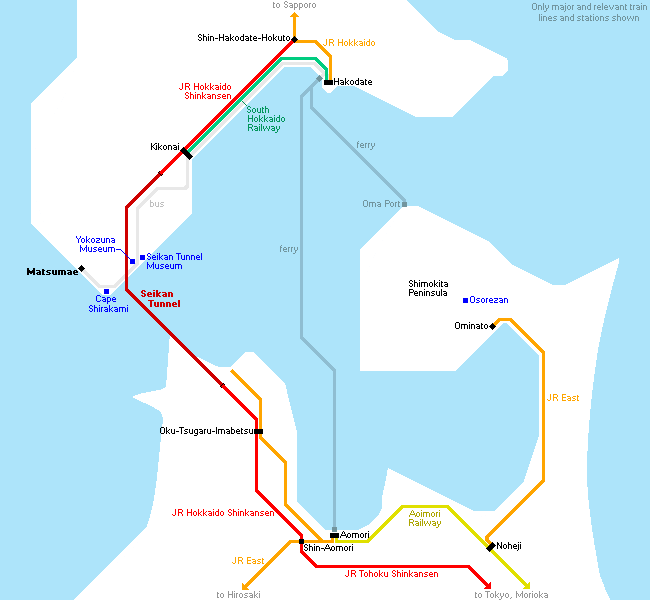
How to get to Matsumae
Matsumae is located near the southwestern tip of Hokkaido about 100 kilometers west of Hakodate. A train line used to run to Matsumae, but it was discontinued in 1988.
These days, Matsumae is reached by bus from Kikonai Station (95 minutes, 2000 yen one way, every 2 hours, not covered by the Japan Rail Pass). Kikonai is served by the JR Hokkaido Shinkansen (covered by the Japan Rail Pass) and by the South Hokkaido Railway (1 hour, 1290 yen one way from Hakodate, not covered by the Japan Rail Pass). The most central bus stop in Matsumae is Matsushiro (松城), a short walk from the castle.
The Seikan Tunnel Museum and Yokozuna Museum are located in Fukushima Town in between Kikonai and Matsumae and served by the bus to Matsumae. Get off at the Seikan Tunnel Kinenkan-mae bus stop (青函トンネル記念館前) and Fukushima bus stop (福島) respectively (about 55 minutes, 1350 yen from Kikonai).
How to get around Matsumae
Matsumae is compact and can be explored entirely on foot.
Hours and Fees
Matsumae Castle
Hours
Closed
Admission
Matsumaehan Yashiki
Hours
Closed
Admission
Seikan Tunnel Museum
Hours
Closed
Admission
Yokozuna Museum
Hours
Closed
Admission
Questions? Ask in our forum.
